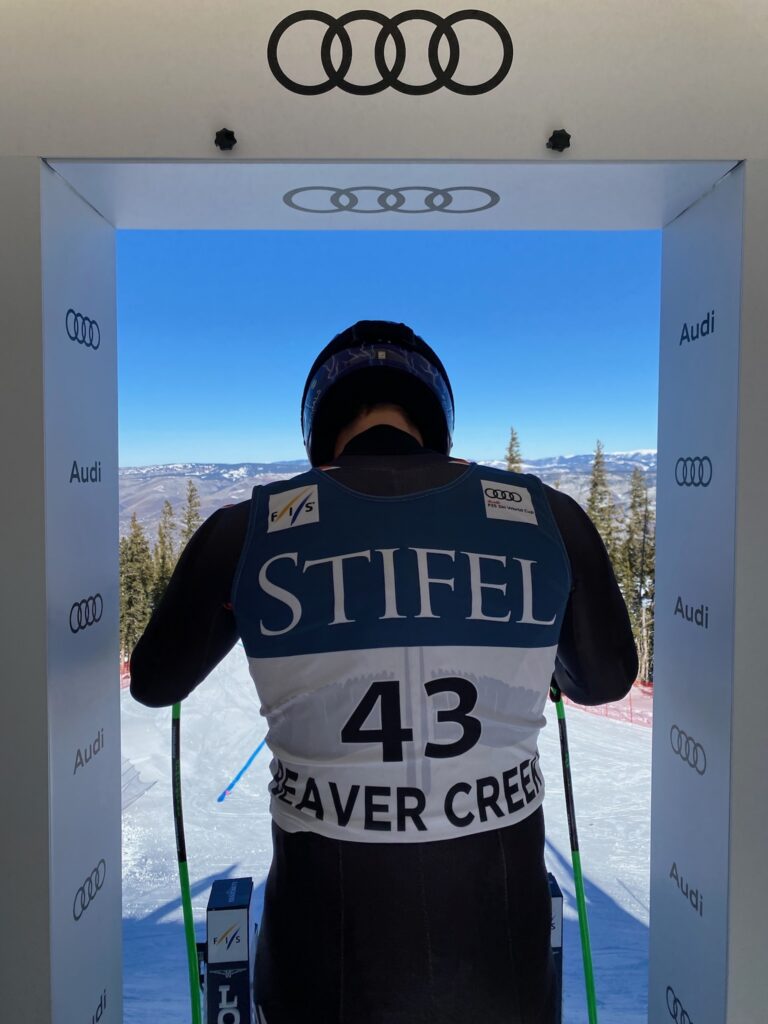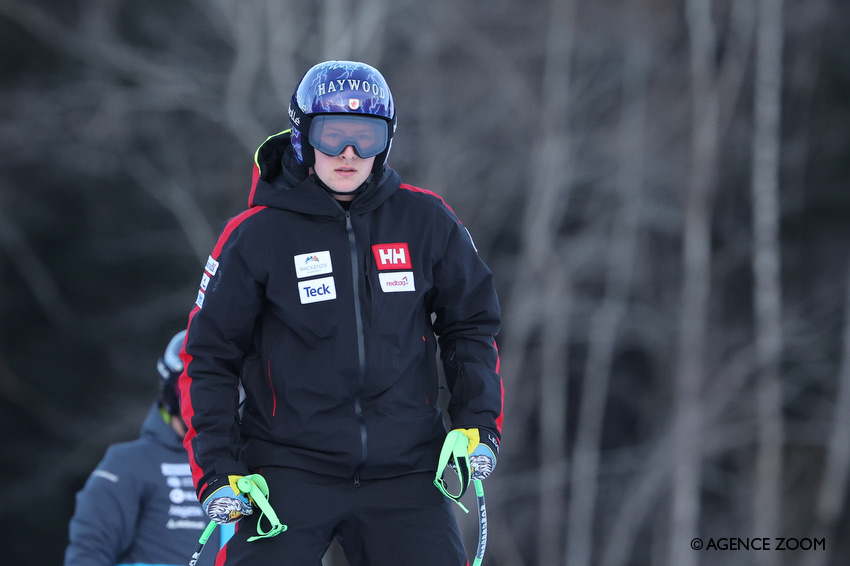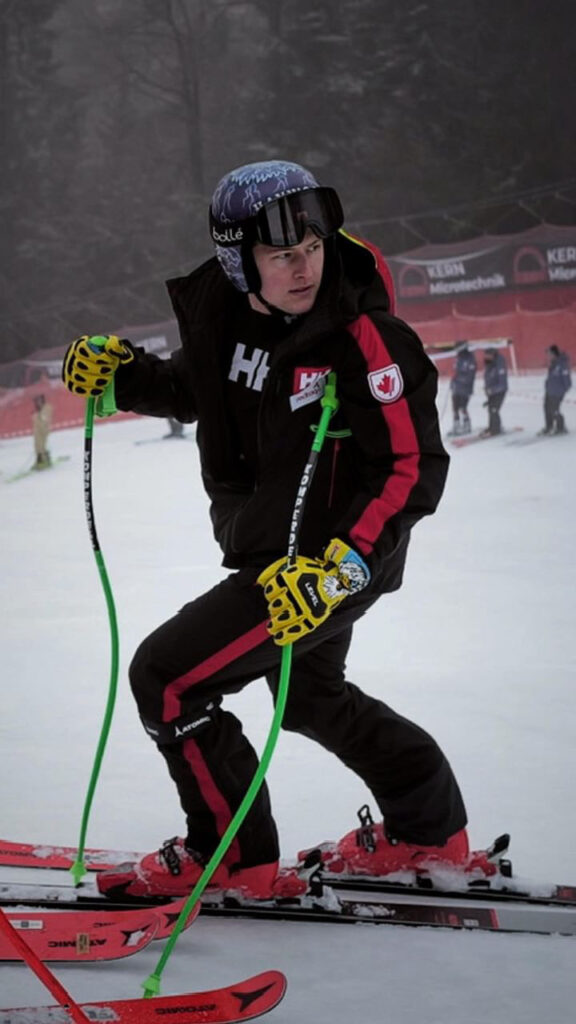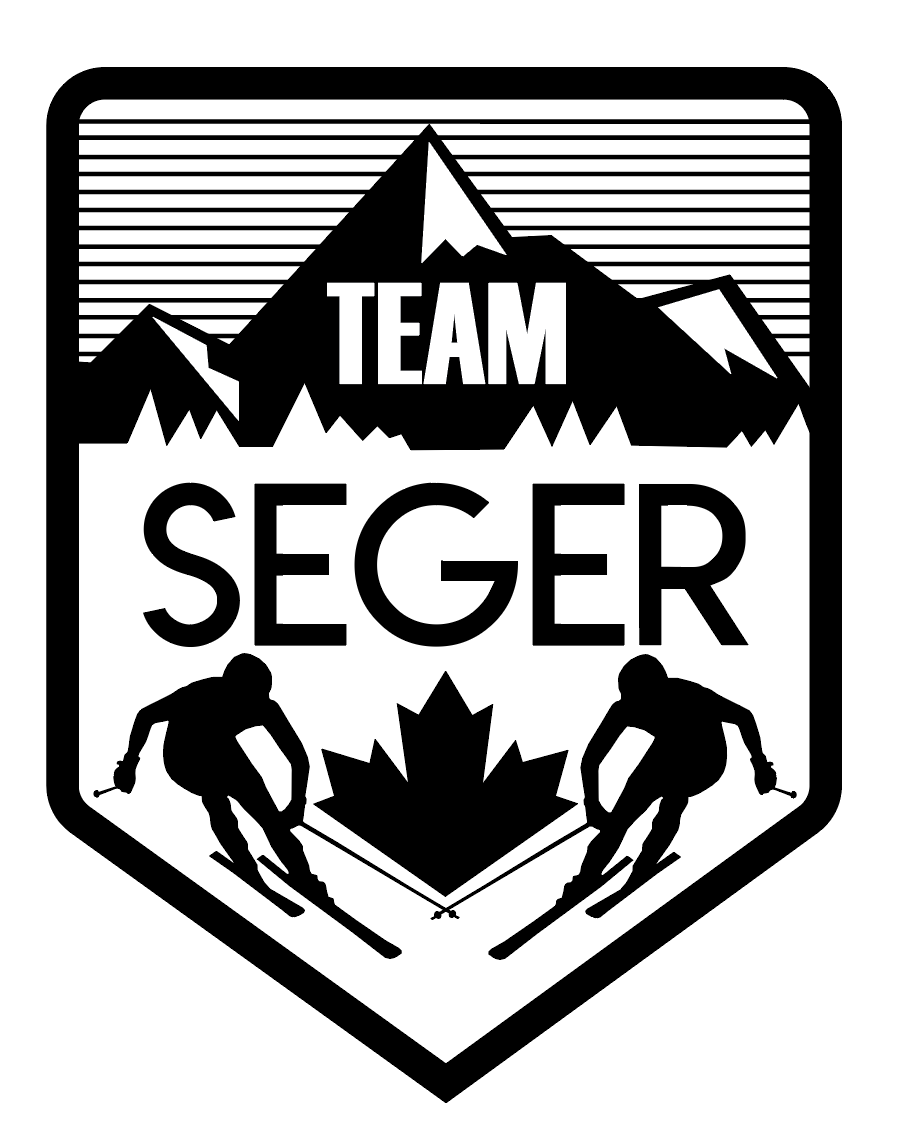It’s been a few weeks now since the last races of the regular World Cup speed season in Kvitfjell. For me, it marked the end of the first chapter in my ‘comeback’ from knee injury. With no top-25 rankings, I won’t be heading to the World Cup finals, a long sought-after goal of mine that will have to keep waiting. The season is far from over with plenty of other Nor-Am and Europa Cup races to do, but I wanted to take this time to reflect on how my first season after injury has gone so far.
For those who don’t know, in February 2023 not long after I pushed out of the start gate of the World Championship downhill in Courchevel, I went off the first jump and felt my knee buckle as soon as I landed. I managed to pull off a sort of deep squat and come to a stop without crashing, but I felt the distinct pop in my knee and sudden instability that I knew could only mean my ACL was gone. It felt so strange facing the reality of my season being over just as I felt I was skiing my absolute best, and without even experiencing any pain or a big crash. Knee injuries are obviously very common in our sport, but it’s strange how you can trick yourself into thinking it won’t happen to you — at least not today. On the positive side though, we had a great team and system in place to handle the next steps for me.
I won’t get into too much detail about the rehab process here, after all this is meant to be a season debrief. But to set the stage, I had surgery on March 3, returned to snow at the end of August, and did my first races in Val Gardena mid December (which ended up being everyone’s first races with everything else being cancelled prior to that). The summer and prep period was quite a bit different than what I’m used to, but I’m fortunate that just about every aspect of my rehab progressed very smoothly. As it came time to get back on snow, my knee was feeling totally solid and strong. I was feeling very confident in it physically, but of course I knew that getting back up to full speed would be a bit of a different challenge especially with the gradual start and much less training volume than usual. It felt great to be back though, so I did my best to take it one step at a time and be patient with myself.

As we approached nine months post-op, the conversation shifted to a return to racing. I had my eyes set on Beaver Creek as it was the earliest opportunity after the nine month mark, and also one of my favourite courses on the circuit. However, in our final week of training before heading to Colorado, I experienced my first minor setback when I tweaked my knee while training GS. It was nothing serious, just working out the kinks so to speak, but it was the first speed bump and definitely had a small effect on my mentality. With that small knock to my confidence, I suddenly felt way more pressure for the upcoming races. I so badly wanted to return to racing with a bang, pick up right where I left off and have a triumphant comeback. It may not be the most realistic thing, but that’s always the hope and now I felt like it was becoming much more of a long shot. In the end we decided to take the Beaver Creek races off my plan to focus on the training runs and getting comfortable on a World Cup track again. I was surprised by how much that felt like a weight off my shoulders, and I was able to enjoy the simple pleasure of skiing that course again. I was way off the pace and knew that was going to need work, but my knee was feeling solid with all the big jumps and I was happy to be there.
In the end I returned to racing in the Val Gardena series. It felt strangely nonchalant to be racing again, perhaps because my serious lack of pace in the training runs left me feeling like there was no pressure for the race. I wasn’t exactly happy with the speed I had been showing, but everything was feeling good physically and I decided that there was no good reason to be on the sidelines anymore. I had to get back in the game and use every run to find my pace again. My races were nothing special, quite slow actually considering that the skiing felt decent. I realized it would take some time to go from “solid” to actually finding the true race line and intensity again. Our team had some awesome results that week though, with three guys finishing in the top 10 in the super G race. It was so cool to see the team perform, but it also made me hungry to be there with them. It’s incredible the way that kind of team momentum is infectious, and although I knew I had a lot of work to do it definitely reinforced my motivation.
The next month of racing was a roller coaster of emotions as we followed the circuit to Bormio, Wengen, and Kitzbuhel. I was often starting the race weeks with a tentative first training run, then being angry with myself for wasting a run with held-back skiing and a lack of progress. That annoyance drove me, and I would often follow it up with a much better approach and stronger skiing the next day. I had many small moments of relief after days like that, for it was a small assurance that I was moving in the right direction. However, the frustration was still building as my race day performances continued to fall short of my expectations and goals. I was always either making mistakes or just skiing slowly. I was experiencing a disconnect between my skiing feeling pretty good, but clearly not being fast. I concluded that with my limited preseason training, my comfort zone must not have caught up yet to where it was before injury. So that became the goal and the clear way forward; push the comfort zone every time I kicked out of the gate.

I think it’s important to have a process or approach-oriented goal like that, perhaps even more so when returning from an injury. The fact is, all you can control on race day is bringing an approach that gives you a fighting chance. With so many other variables at play, all you can hope for is to put yourself in contention by giving your best effort. I have to admit that despite my effort to maintain this attitude, as we got to the Kitzbubel race week I found myself in an emotionally dark place. I was disappointed by the days when I didn’t execute the full-send approach the way I had planned, and that was compounded by the disappointment of still not having earned any World Cup points since my injury. In the first of the two Kitzbuhel downhill races, I skied with no confidence in myself — which I can assure you is not an enjoyable way to rattle down the world’s gnarliest downhill. Kitzbuhel is one of the stops I look forward to most in a season, but this time I found myself just wanting to get the week over with. I had basically written off the second race of the week, wanting to get to the next training block so I could figure myself out again. The morning of the second race, I did my best as always to shift into a positive attitude. I knew something had to change, and we made a plan to keep the focus very simple, thinking about nothing more than the first thirty seconds of the course from the start gate to the Steilhang exit onto the road. All that mattered for that day was setting the tone for the run, executing the first section and letting the rest take care of itself.
It’s funny how a switch can flip even when you feel like you’re at your lowest. I never would have guessed that the day after I wrote off the race week, I would go out and score my first World Cup points since injury. When I pushed out of the gate that day, I finally felt like I was trusting myself more and letting my skis release down the hill instead of hanging on that little bit. Twenty eighth place is nothing special in the grand scheme, but the feeling I found that day was a massive personal win. That feeling told me I was still capable of being competitive when I brought my best.
The next weekend I followed up with another 28th place in the Garmisch super G, but unfortunately posted a DNF as well on another promising run. I was far more content with the feeling that I was at least in the game again, but now the realization was setting in that there weren’t many races left in the season. We had so many cancellations this winter, and now that I had found some mojo I was also desperately short on opportunities.

Qualifying for World Cup finals had always been a big goal of mine. Last season was the first time I qualified in super G, and wasn’t able to attend. With only the Kvitfjell race weekend left this year, I knew I would essentially need a podium in both events to have any chance at going. I was very aware of this pressure, and the last thing I wanted was to let it take away from the approach-oriented focus I had been cultivating. I managed to squeeze into 29th in the downhill, just 1.29 seconds out in a very tight race. I found myself back in 47th in the super G race, having completely over-skied the easy course set despite feeling like I brought a good approach.
I had mixed feelings following that last race weekend in Kvitfjell. There were so many positives from the last few race weeks, but it’s hard to swallow when you’ve run out of opportunities just as you’ve found some momentum. The team was riding another high following Cam’s third place finish in the downhill and Jeff’s first World Cup podium with second place in the super G. It’s awesome to see that our team’s tireless work over the years has led to that level of competitiveness. There’s no better pick-me-up than when your teammates and friends are crushing it and showing what’s possible. I’m hungry to put my name up there with them, though it seems it will require some more patience and hard work to earn it.
For the first time in a while I’ve reached the final stretch of the season without feeling burnt out, but rather hungry to keep racing. I want to continue building on the things that have been clicking lately and use the last part of this season to practice and engrain my approach. To that end, I’m going to do my best to make the most of the remaining Europa Cup and Nor-Am races. All that matters now is going full send whenever I kick out of the start gate, continuing to push my comfort zone and staying focused on the approach rather than the results.
There were a lot of lessons learned this season coming back from my first significant lower body injury. I knew the first part would be slow, but I didn’t expect it to be such a long process between feeling good on skis and actually being fast again. It has taught me a lot about being patient and trusting in myself. I’ve learned that sometimes less can be more, and keeping things simple when you’re feeling the pressure can go a long way. There were many struggles, but I hope this story didn’t come off too negatively. These struggles are a reality of sport, and I know they will make the good days that much more rewarding. I also didn’t intend to write this much if I’m honest, but I find it difficult to condense the emotions of such a pivotal season. I believe it’s also therapeutic, hopefully for more than just myself. So if you’ve made it this far, thanks for reading. Let me know what you think in the comments or if there’s anything else you would be interested to know.
Cheers,
Brodie

Stay the course Brodie, keep building your confidence and with a full year of training things will be better. Look At India Sherret on the ski cross side It took her 3 years to get back to where she was. Started this season late but Now has a first, and 3rd along with a couple of 4ths and small final finishes. Get ready for next year.
Great look into the heart and mind of one of the fastest skiers on the planet! You’re a great writer Bullet!
Thanks Brodie, that was a great insight to the mental challenges of a physically-challenging sport. My son Cory is a Special Olympics athlete, he trained with you many years ago at WMSC. We’ve always been grateful to the club and its members like you for welcoming Cory onto your race courses. We also chatted with you briefly at Lake Louise a few years ago. While he hasn’t been injured while racing like you have, he has had to deal with major health issues, like cancer, along the way too. Somehow, he got through it. He and you are an indication of the strength of the human spirit, you prove to us all that we can get through anything. At our Nationals in Calgary earlier this month, Cory took gold in GS, SG, and silver in SL. That should be good enough to get him onto Team Canada 2025 to race at Sestriere next March.
Hopefully, you’ll both have a terrific season next year and by this time in 2025 we’ll all be celebrating. Best of luck to you. We’ll be watching. Michael & Cory Duhaime.
Hey Brodie,
I enjoyed reading this. Some powerful insight into your mind as a racer and someone that values details and riding momentum waves of team spirit. Use all of that. Your time is in the making and that time is coming for you. Trust the process and your small wins which will create those large victories down the road. I can feel it in my bones man. Your time is coming and I’m excited to see it unfold. Trust in those that trust in you. Keep your chin up and your tuck down and let er’ rip. Soak up those opportunities to get that mileage in you want on The Europa’s and Nor-Am’s. Spend that time enjoying those turns without that elephant on your back. Your body will work out those kinks as you say sometimes on their own, which will guide your release of the ski. Enjoy the adventure.
Kelly